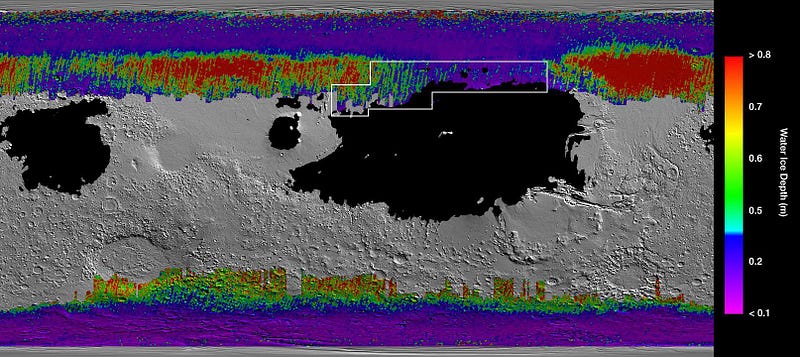# NASA's Innovative Strategies for Water Harvesting on Mars
Written on
Chapter 1: NASA's Mars Aspirations
NASA is diligently developing the technology necessary for lunar missions, viewing this as a precursor to its ultimate ambition of sending humans to Mars. While reaching the Martian surface presents significant challenges, the agency is proactively identifying potential landing sites. A recent study led by NASA highlights optimal locations based on the presence of water ice lying just beneath the Martian surface.
Traditionally, astronauts have transported all necessary supplies from Earth, which substantially increases the weight of launch vehicles and restricts the cargo they can carry. Consequently, NASA is investigating the potential for "in situ resource utilization," which involves gathering essential materials at the destination.
Water is particularly heavy and crucial for human survival, making it advantageous to extract water on Mars. According to NASA, the availability of water should be a primary consideration when selecting landing sites on the red planet. Fortunately, data from NASA's Mars Reconnaissance Orbiter (MRO) and Mars Odyssey orbiter has yielded extensive information regarding water locations.
While liquid water is fleeting in Mars' thin atmosphere, water ice beneath the surface remains stable and readily accessible in the mid-latitudes. The following map illustrates estimated depths of ice based on findings from the MRO and Odyssey. Warmer hues represent deeper ice deposits, while cooler tones indicate ice closer to the surface. Areas shaded in black are too dust-covered for safe landings. The highlighted section in Arcadia Planitia denotes promising landing zones.

The map reveals that the purple regions may have water ice located just an inch beneath the surface, allowing astronauts to extract it without the need for specialized excavation tools. Conversely, in the red areas, ice lies several feet below the surface. Harvesting water on Mars would not only provide hydration for astronauts but also enable the production of hydrogen and oxygen fuel for rockets. Establishing fuel production could significantly reduce the costs of regular trips to and from Mars.
Currently, NASA has considerable work ahead before finalizing a landing site. The agency is close to completing the Space Launch System (SLS), which will facilitate lunar missions in the early 2020s. The SLS is also compatible with Mars missions, though scientists are still assessing the health impacts of human deep-space exploration.
Now read: NASA Puzzled as InSight Drilling Instrument Pops Back Out of Martian Surface, A Vanished Martian Oasis Holds Clues to How the Red Planet Dried Out, NASA Attaches Helicopter Drone to Mars 2020 Rover
Chapter 2: Recent Discoveries and Insights
As NASA progresses in its preparations for Mars, several intriguing updates have emerged.
In the video titled "Major Mars Updates (Dec, 2023): Green Glow, Strange Polygonal Structures, Ice Map and More!", viewers can learn about the latest findings and technological advancements related to Mars exploration.
Additionally, a new global water map of Mars has been released, revealing vital information about water resources on the planet.
The video "New global water map of Mars #shorts" offers a brief overview of this exciting development, highlighting the importance of water in future Mars missions.